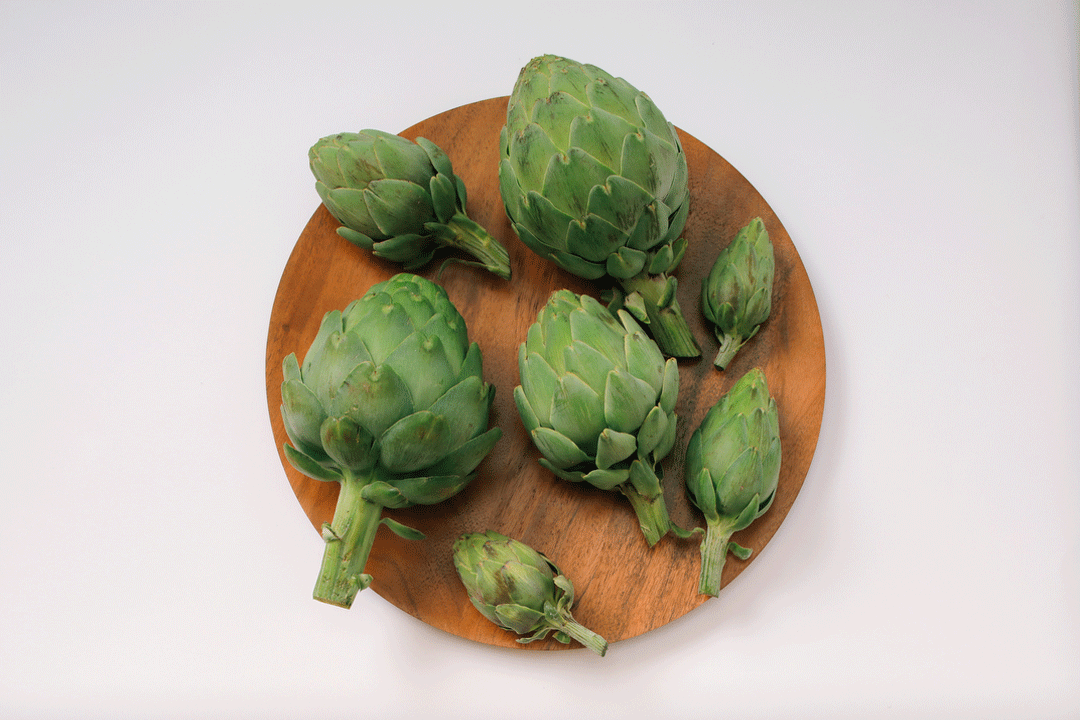Frost Helps the Flavor of Winter Artichokes : The delicacy is easy to prepare and can be a low-calorie treat with the right dip.
- Share via
There is a quality crop of winter artichokes, those exotic-looking flower buds born from the thistle bush.
Although current prices--hovering around $1.69 each--are pricier than those for artichokes from the peak spring harvest, shoppers will be happy with their purchase, said Mary Comfort, manager of the Artichoke Advisory Board in Castroville.
“We had a frost just before Thanksgiving that really helps the flavor,” Comfort said. “It gives the artichokes a nuttier flavor.”
You may notice, however, a slight brown tinge on the leaves of the globes purchased during the next few weeks. “That’s caused by the frost,” Comfort said, “but when you cook them up that will disappear.”
Castroville is Land of the Artichoke. While California is “virtually responsible for 100% of the nation’s artichokes,” Comfort said, most of those are grown in the northern coastal region.
Rio Farms and PurePak, both of Oxnard, have entered the artichoke market in recent years. Though both companies devote small acreage to the crop, the winter months provide a window of opportunity during Castroville’s quieter time.
The local harvest will commence in mid-December, according to Rio Farms manager Danny Periera.
Farmers’ market shoppers will have to wait a few more weeks to acquire artichokes, said Karen Wetzel, manager of the Ventura County Farmers’ Markets.
“It’s a little early yet. We’re hoping to have them by Christmas,” she said.
Artichokes do provide a smattering of several vitamins and minerals, including potassium, vitamins A, B and C, iron and calcium. Depending on, of course, what you decide to slather on the leaves, artichokes are a low-cal delicacy. If you dip them, try a low-fat lemon or garlic vinaigrette instead of melted butter or a hollandaise sauce.
The cooking novice should be undaunted the artichoke’s exotic appearance--preparation can be as simple as boiling, steaming or microwaving.
Following are a few tips provided by the advisory board:
When shopping for artichokes, choose those with firm, tightly compacted leaves with a fresh green color.
The globes come in various sizes, from small to large; but size has nothing to do with age or quality. Any size can be boiled or steamed. The largest ones, however, are best for recipes that require stuffing.
To prepare whole artichokes, first run under cool water, gently spreading the leaves apart for a thorough cleaning. Drain.
The stem should then be cut off near the base so the artichoke stands upright. Snap off the more leathery, coarse petals close to the stem. Use your kitchen sheers or scissors to clip off the thorny tip of each petal for hassle-free handling. The top half inch is also commonly sliced off.
Now reach for your deep saucepan, add a couple inches of water and boil. Place artichokes in boiling water, standing upright and packed together snugly. Cover and simmer 30 to 45 minutes for large artichokes. For a quick check to see if they’re cooked enough, the base should be easily pierced with a fork.
(Hint: To prevent discoloration while cooking, add one tablespoon of lemon juice to the water. A little bit of oil will also give the leaves a glossy appearance.)
After cooking, turn the artichokes upside down to drain. They can be served immediately or chilled.
Eating the artichoke requires a method. The treasured heart awaits deep inside, shrouded by petals. Leaf by leaf, dipping each one in your chosen accompaniment, run the soft, meaty portion through your teeth, then toss aside the fibrous remainder of the leaf.
In time, you’ll come upon the choke, or thistle portion, which is easily removed with a spoon. Underneath the furry choke is the heart. Enjoy.
More to Read
Eat your way across L.A.
Get our weekly Tasting Notes newsletter for reviews, news and more.
You may occasionally receive promotional content from the Los Angeles Times.










